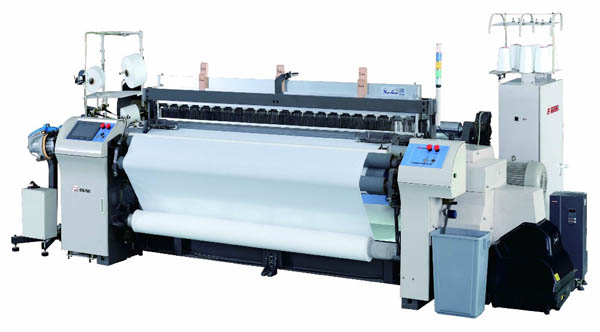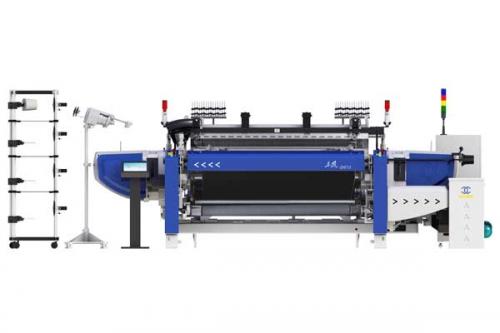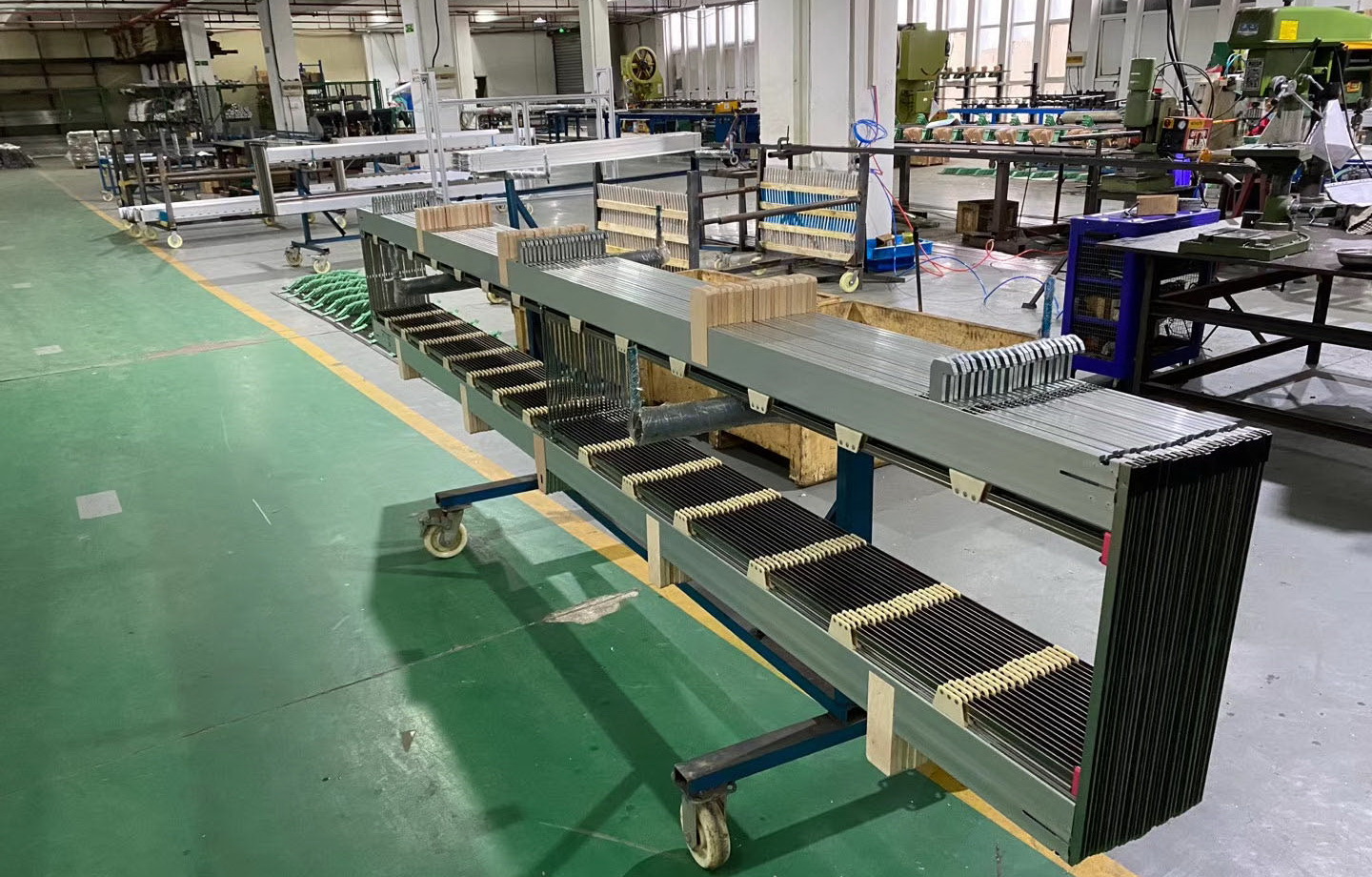Technology Progress and Research Direction of Harness Frame
The Development of Harness Frame
Modern textile technology and weaving techniques have grown rapidly since the 1960s, consequently bringing up the higher requirement for harness frame performance and specification. Groz-becket from Swiss, Schmeing from Germany, Steel Heddle from the US, Toyota from Japan have been devoting to structure improvement and the material invention of the harness frame. New technology continuously released to boost the development and progress of harness frames.
In 1976, Groz-becket adopted the way of filling the foam medium, making the important step of vibration and noise reduction on the harness frame. In 1980, Schmeing developed new type harness frame material made by metal and plastic combination, the cross-beam was made by glass fiber reinforced plastics and adopted a hollow section. Its weight is 30% less than steel harness frame, and embody the features of noise reduction and abrasion reduction. In 1982, Groz-becket developed two types of harness frames—Grobextra ALfix and Gorbamtex ALfix, with light-weight, stable performance, and an extended life endurance. After 5 years, Groz-becket released harness frame made of carbon material, due to high production cost, the new technology was not widely promoted and used.
FERmomo steel harness frame was developed in 1993 by Groz-becket to meet the temporal technical requirements of the high-speed loom. The same year, Steel Heddle from the United States successfully developed a carbon fiber harness frame and tested at the speed of 900r/min and proven successful. In 1996, Groz-becket brought out a harness frame without a clamp head, called Easyfix, which lowered maintenance cost, shortened loom stop time, and reduce defective fabric. In 2006, GTP from Belgium developed steel harness frame Hybirdpower151, made by aluminum and carbon fiber composite, with supreme strength and good vibration resistance.
The Shortage of Traditional Harness Frames
The vibration and noise during weaving mainly come from harness frames. The traditional wooden harness frames and iron harness frames have a relatively heavyweight that can generate big inertial impact load during the loom shedding process. This defect has severely hampered the high speed running of a weaving loom. The inertial property in high-speed running will interfere performance of weaving loom, causing intense vibration and noise, and even yarn breakage or mechanical failure, leading to low efficiency and unstable performance.
With the continuous improvement of loom speed, modern weaving technology has brought up a higher requirement for harness frames. The traditional harness frames are developing to be more lightweight and less vibrating, especially the third-generation harness frame using aluminum alloy. The harness frames have made significant progress in weight, strength, and vibration resistance.
Although the aluminum harness frames have to a certain extent met the demand of modern high-speed weaving, the technical shortage still exists. In continuous running at the speed of 800 rpm, the aluminum alloy harness frames are easy to have fatigue crack and even cause frame break. Production has to be stopped to fix the machine, hence bringing loss to the company.
The Necessity to Develop New Type Harness Frame
To meet the demand of high-speed running in a modern weaving machine, new harness frames should have the features of lightweight, small vibration and noise, high rigidity, and fatigue resistance. Under this circumstance, a composite material with outstanding mechanical and physical properties has become the first choice to break the disadvantages of traditional harness frames.
At present, the main material for new type harness frames is full carbon fiber and carbon aluminum composite. Carbon fiber has supreme mechanical and physical performance, having only 1/4 weight of steel, and 7 to 9 times tensile strength of steel. The industrial products made by carbon fiber obtain not only high strength but also lightweight, high temperature and pressure resistance, low thermal expansivity, and heat conductivity.
The new type of harness frame enables the speed of shuttleless loom to reach more than 2000r/min. The practice shows that harness frames made by composite material have an incomparable advantage over traditional harness frames. The application of composite material has largely decreased inertial load in loom running status and reduced the vibration and noise. In the future, the market share of new type harness frames will rise substantially. It is an inexorable trend with the development of weaving technology.

 English
English  한국어
한국어  português
português  العربية
العربية  tiếng việt
tiếng việt  ไทย
ไทย  Malay
Malay  हिंदी
हिंदी  Indonesia
Indonesia  বাঙালি
বাঙালি  اردو
اردو 


